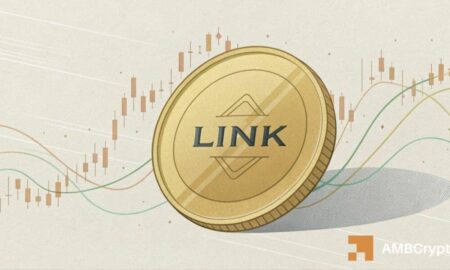EOS Token Rebranding: A New Chapter for Vaulta in the Web3 Landscape
Introduction to EOS and Rebranding to Vaulta
The evolution of the EOS Network has recently led to the rebranding of its native token to Vaulta. This transition aims to bridge the gap between decentralized finance (DeFi) and traditional banking, effectively positioning Vaulta as a pioneering player in the burgeoning Web3 banking ecosystem. Despite its promising vision, the rebranding has not equated to a significant shift in market performance or sentiment.
Market Performance Post-Rebranding
Following the rebranding to Vaulta in March 2025, the token has experienced a notable decline in value, diminishing by approximately 9.4% within three days. This drop coincided with a broader market correction in Bitcoin (BTC), which fell by about 5% during the same period. These declines raise questions about the effectiveness of the rebranding and the underlying confidence in Vaulta’s market position, particularly against BTC.
Trading Trends and Tokenomics
The Vaulta team has made it clear that the tokenomics remain unchanged post-rebranding, which means the structure governing the token’s distribution and functionality is preserved. Despite this assurance, Vaulta has failed to break free from its long-term downtrend. The technical indicators on trading charts highlight ongoing bearish momentum, with moving averages confirming this declining trajectory. Cumulatively, these factors indicate a challenging trading environment for Vaulta.
Immediate Price Targets and Market Sentiment
Current market dynamics suggest that traders and investors remain bearish. The long/short ratio has been below 1 for ten consecutive days, indicating that more accounts are bearish than bullish. While the funding rate has been positive, recent trends show it is waning, hinting at market participants’ lack of confidence. Key support levels are identified at $0.258, with further targets at $0.219 and $0.155 if the decline persists.
Short Selling and Market Dynamics
Recent trading activities have shown an increase in short-selling, particularly as the open interest climbed during price dips. This trend has contributed to a decline in the funding rate. With the local resistance pegged at $0.3, the potential for a sustained recovery looks uncertain. Despite a minor uptick in spot cumulative volume delta (CVD), signaling slight bullish interest, it seems unlikely that this momentum will continue, given the prevailing market sentiment.
Conclusion: The Future of Vaulta
In summary, the rebranding of EOS to Vaulta has not reversed the prevailing downtrend in its market performance. While the project is ambitiously positioned within Web3 banking, it faces significant hurdles in restoring investor confidence and value. Market trends reflect a cautious outlook, with bearish sentiment dominating trading activities. For potential investors and traders, it’s crucial to remain vigilant and assess the evolving landscape while evaluating any future involvement with Vaulta. As always, it’s essential to conduct thorough research and analysis prior to making financial decisions.
















